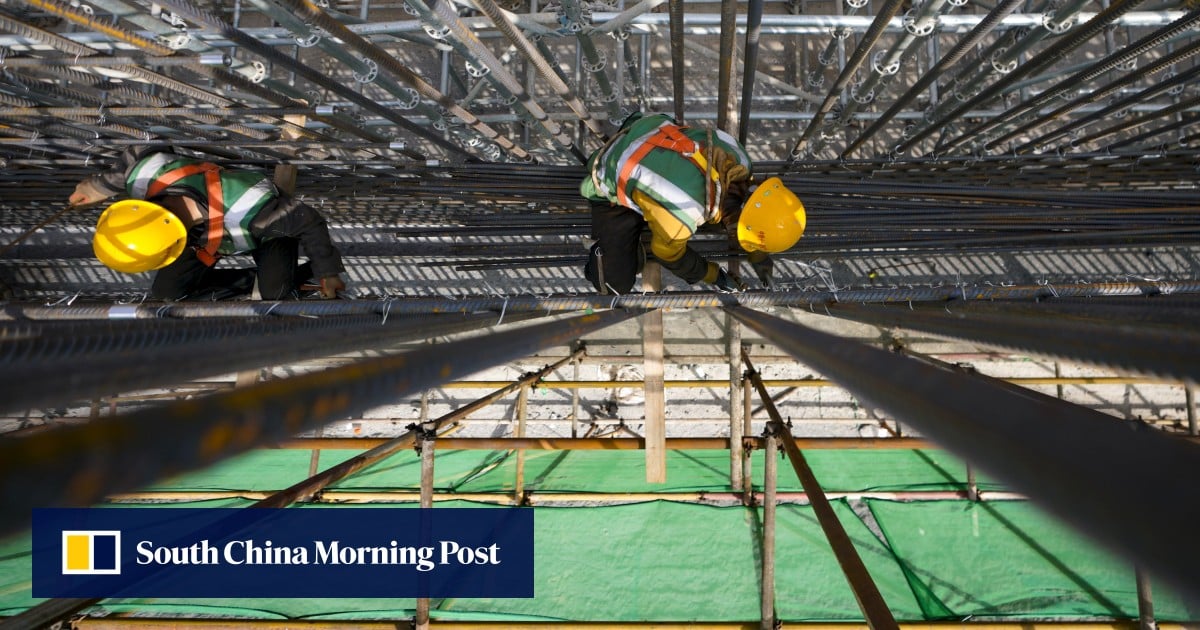
China’s financial regulator has lowered the risk weightings on property sector-related loans for commercial lenders, as Beijing attempts to walk the fine line between salvaging the sector and defusing a local government debt crisis while also serving the real economy.
The risk weightings are covered under capital base rules, which determine the minimum amount a bank must hold in relation to the risk profile of its lending activities and other assets.
Preventing, resolving China’s financial risks are ‘eternal theme’: Xi Jinping
Preventing, resolving China’s financial risks are ‘eternal theme’: Xi Jinping
Li, who was appointed party chief of China’s new financial regulator in May, also said the high-quality development of the financial market should serve China’s overall demands, in particular, technology and innovation, the green economy, inclusive financing, elderly care and the digital economy.
The rules, which replaced and formalised previous drafts, left the minimum core first-tier capital adequacy ratio of 5 per cent and minimal leverage ratio of 4 per cent unchanged.
The two redline requirements are to ensure banks have sufficient funds to cover losses and remain solvent under difficult financial circumstances.
The regulator, though, lowered the risk weightings in measuring exposure to mortgages and equity holdings in enterprises.
The latest rules enable those banks with a big mortgage profile to unfreeze substantial capital
It also lowered the minimum capital requirement for mortgages and loans to property developers.
“The latest rules enable those banks with a big mortgage profile to unfreeze substantial capital, meaning a boon and a relief when they contend with lower mortgage interest income and local government debt restructuring,” Fan Xinjiang, an analyst with Sinolink Securities, said on Thursday.
The regulator has also fine-tuned requirements based on the size of the bank and whether they have exposure to overseas assets.
Small lenders with no overseas business face simplified capitalisation requirements to better serve the local economy and small and medium-sized enterprises (SMEs), while large banks with overseas exposure are still subject to rigorous supervision, the regulator said.
Investors worry as China’s Communist Party cements control over finance
Investors worry as China’s Communist Party cements control over finance
“The NAFR is seen as prudent with risk management, making no compromise on capital adequacy ratio requirements, but small banks that usually cater to SMEs and regional developers can save compliance costs and have more liquidity to grease the economy,” said Lawrence Chen, a senior analyst at the China Construction Bank International.
Beijing loosened funding conditions for property developers at the end of last year, while local governments have increased bond issuance since August to enable debt repayment.
The new rules, which will take effect in January, also require banks to improve credit risk assessments by considering countries, information technology and climate change, as China is transiting to a hi-tech and green economy amid increased geopolitical complication.
No one should think that these adjustments will help recover losses
The NAFR said the average capital adequacy rate of Chinese banks would improve under the new rules, but there may also be “marginal changes” in the capital adequacy performances of some individual lenders that “reflect the result of differentiated supervision”.
China had 38.5 trillion yuan (US$5 trillion) of outstanding home mortgages at the end of September, according to the central bank.
“Unfortunately, bank loan losses have occurred and no ‘regulatory tricks’ can undo the losses. The only thing banks can do is to spread the losses across different stakeholders and across time,” said Chen Zhiwu, chair professor of finance at the University of Hong Kong.
“At the moment, the priority is to ensure the delivery of homes by sacrificing banks’ interest to help developers complete projects … no one should think that these adjustments will help recover losses.”


